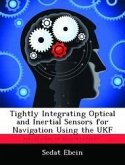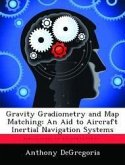Inertial navigation systems and GPS systems have revolutionized the world of navigation. Inertial systems are incapable of being jammed and are the backbone of most navigation systems. GPS is highly accurate over long periods of time, and it is an excellent aid to inertial navigation systems. However, as a military force we must be prepared to deal with the denial of the GPS signal. This thesis seeks to determine if, via simulation, it is viable to aid an INS with visual measurements. Visual measurements represent a source of data that is essentially incapable of being jammed, and as such they could be highly valuable for improving navigation accuracy in a military environment. The simulated visual measurements are two angles formed from the aircraft with respect to a target on the ground. Only one target is incorporated into this research. Five different measurement combinations were incorporated into a Kalman filter and compared to each other over a six-minute circular navigation orbit.








